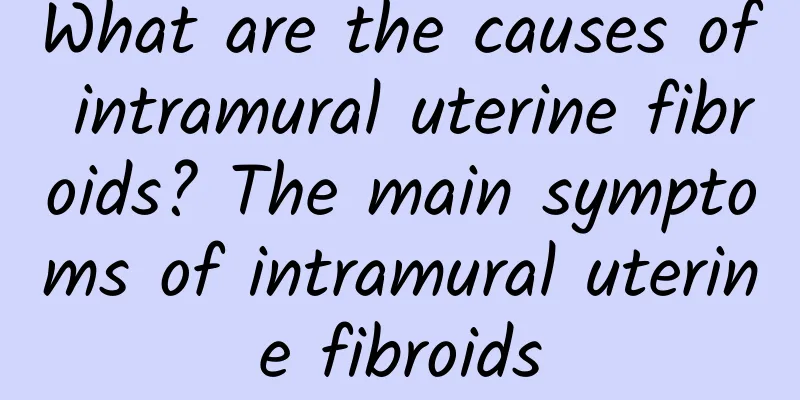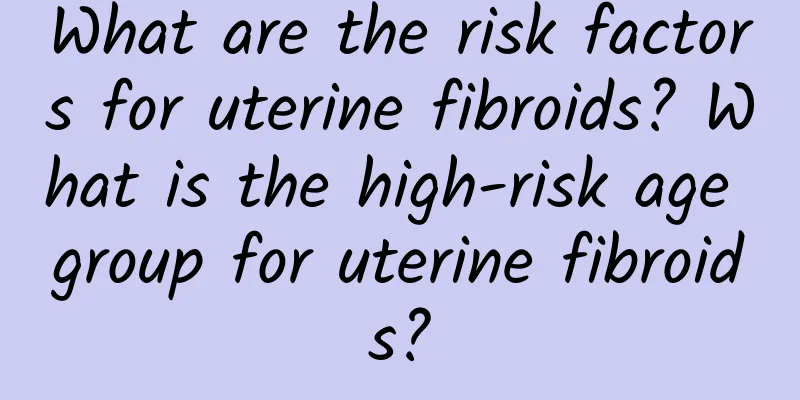Symptoms of adnexitis

|
Generally speaking, adnexitis is a common disease caused by pathogenic microorganisms invading the reproductive organs and causing infection of the fallopian tubes and ovaries. It is divided into two types: acute and chronic. The symptoms of these two types of adnexitis are introduced as follows. 1. What are the symptoms of adnexitis? 1. Fever At the onset of the disease, a high fever of 39-40℃ may occur, and there may be chills or shivering, followed by irregular remittance fever. If the inflammatory lesions are isolated due to adhesion, the body temperature can drop quickly; if the high fever drops once and then rises again, it indicates that the inflammation has spread or purulent lesions have formed. If the pulse rate is accelerated and the body temperature is positively correlated, or the two are not proportional, the inflammation may be widely spread. 2. Abdominal pain At the beginning, the pain is limited to the lower abdomen, mostly bilateral, and rarely vomiting. Different from the metastatic pain of appendicitis, the abdominal pain is aggravated during defecation, sometimes accompanied by urinary pain, and often constipation, abdominal distension, and mucus in the stool, which is the result of inflammatory stimulation of the colon wall. 3. General In acute cases, the face is flushed, the general condition is good and the pulse does not exceed 100 times/min. If the disease is prolonged and purulent lesions are present, the general condition deteriorates, the patient becomes weak and fatigued, the pulse >100 times/min, sweating, and the face becomes yellow. 4. Physical signs There is significant tenderness in the lower abdomen, which is most obvious 1.5 to 2 cm above the midpoint of the inguinal ligament. In severe cases, the patient refuses to press, has rigid abdominal muscles, and has obvious rebound pain. Gynecological examination shows purulent vaginal discharge and varying degrees of redness and swelling of the cervix. Bimanual examination shows severe cervical lifting pain, and the pelvic condition is difficult to ascertain due to tense abdominal muscles. In general, the uterus is relatively fixed, with severe tenderness. The adnexal areas on both sides are tender and it is not easy to feel the adnexal masses. 2. Symptoms of acute adnexitis The symptoms of acute adnexitis are mainly acute lower abdominal pain, accompanied by fever. During gynecological examination, there is obvious tenderness and rebound pain in the adnexal area. Routine blood tests show an increase in white blood cells and a significant increase in the proportion of neutrophils. Symptoms of adnexitis: If acute adnexitis is not treated in time or thoroughly, it may turn into chronic adnexitis. Oral antibiotics and topical medications can be used to relieve and eliminate inflammation. 3. Symptoms of chronic adnexitis 1. What is chronic adnexitis? Chronic adnexitis refers to the inflammation of the female reproductive organs, including the uterus, fallopian tubes, ovaries and the surrounding connective tissue, pelvic peritoneum, etc. Chronic adnexitis mostly occurs after childbirth, cesarean section, abortion, various gynecological surgeries, and after the placement of intrauterine contraceptive devices. At this time, the integrity of the reproductive organs and their natural defenses are damaged, allowing bacteria to enter the wound surface and infect it. Chronic adnexitis is a common disease in women, especially in some countries with disordered sexual life and rampant sexually transmitted diseases. It is the most common disease; in China, in recent years, due to the placement of intrauterine contraceptive devices and the opening of nightlife, the incidence of chronic adnexitis has also shown an upward trend. 2. Specific manifestations of symptoms of chronic adnexopathy Chronic adnexitis is a disease suffered by many women. Generally, patients have abdominal pain on one side and thickening of the adnexal area. The symptoms occur when tired or before and after menstruation. The diagnosis based on these symptoms alone is actually a rough one. But in fact, many diseases have similar symptoms and manifestations, such as endometriosis and pelvic venous congestion syndrome. The symptoms of these two diseases are very similar to those of chronic adnexitis. Chronic adnexitis causes varying degrees of abdominal pain. Chronic inflammation recurs over time, causing pelvic congestion, connective tissue fibrosis, and adhesion of pelvic organs. Patients experience symptoms such as lower abdominal distension, pain, and lumbar pain, which may be mild or severe, accompanied by increased vaginal discharge, back pain, and menstrual disorders, which often worsen during menstruation or after fatigue. During gynecological examinations, there is tenderness, thickening, or tender masses in the bilateral or unilateral adnexal areas, and the number of white blood cells is elevated or normal. It is worth noting that some symptoms of adnexitis are not very obvious sometimes, but because the fallopian tubes and ovaries are adjacent, it is difficult to distinguish when inflammation occurs. Especially chronic inflammation of the fallopian tubes, over time, can lead to fibrosis, thickening and obstruction of the fallopian tubes, and can also adhere to surrounding tissues. If both ends of the fallopian tubes are blocked, hydrosalpinx can form, and the accumulated water will penetrate into the ovaries that are adhered together, forming a fallopian tube cyst. This is the main cause of post-marital infertility or ectopic pregnancy. |
<<: What are the causes of adnexitis in women?
>>: What are the symptoms of adnexitis?
Recommend
Women with irregular menstruation should beware of ovarian function degeneration
Irregular menstruation is a common symptom of end...
What should I do if I have chronic pelvic inflammatory disease?
According to clinical data, the number of patient...
How to choose an abortion hospital
Seeing blood after strenuous exercise means that ...
Common medical symptoms of uterine fibroids
The symptoms of uterine fibroids are the most bas...
Does an ectopic pregnancy implant on the ovary require surgery?
Ectopic pregnancy implantation on the ovary requi...
Is Bulletproof Coffee a Magic Tool for Weight Loss? Nutritionist: If you want to lose weight quickly with a ketogenic diet, be careful of these hidden landmines
The "Bulletproof Coffee" craze, which i...
The five major factors that cause dysmenorrhea in women
Patients with dysmenorrhea want to know what the ...
What are the common methods of treating ovarian cysts?
Ovarian cysts, I believe all female friends are f...
Uterine fibroids usually present as abnormal vaginal discharge
Uterine fibroids usually manifest as abnormal vag...
Poor sleep can lead to obesity! 3 nutrients to secrete leptin
Not only will eating too much and not exercising ...
Four common examination methods for uterine fibroids
The examination method of uterine fibroids plays ...
Different classification methods for uterine fibroids
Uterine fibroids are the most common benign tumor...
How to tell if your period is coming
How to tell if your period is coming? Menstruatio...
The dangers of acute adnexitis
Acute adnexitis can lead to serious reproductive ...
How big is the uterine fibroid before surgery? The best treatment for uterine fibroids
Uterine fibroids often threaten the patient's...









